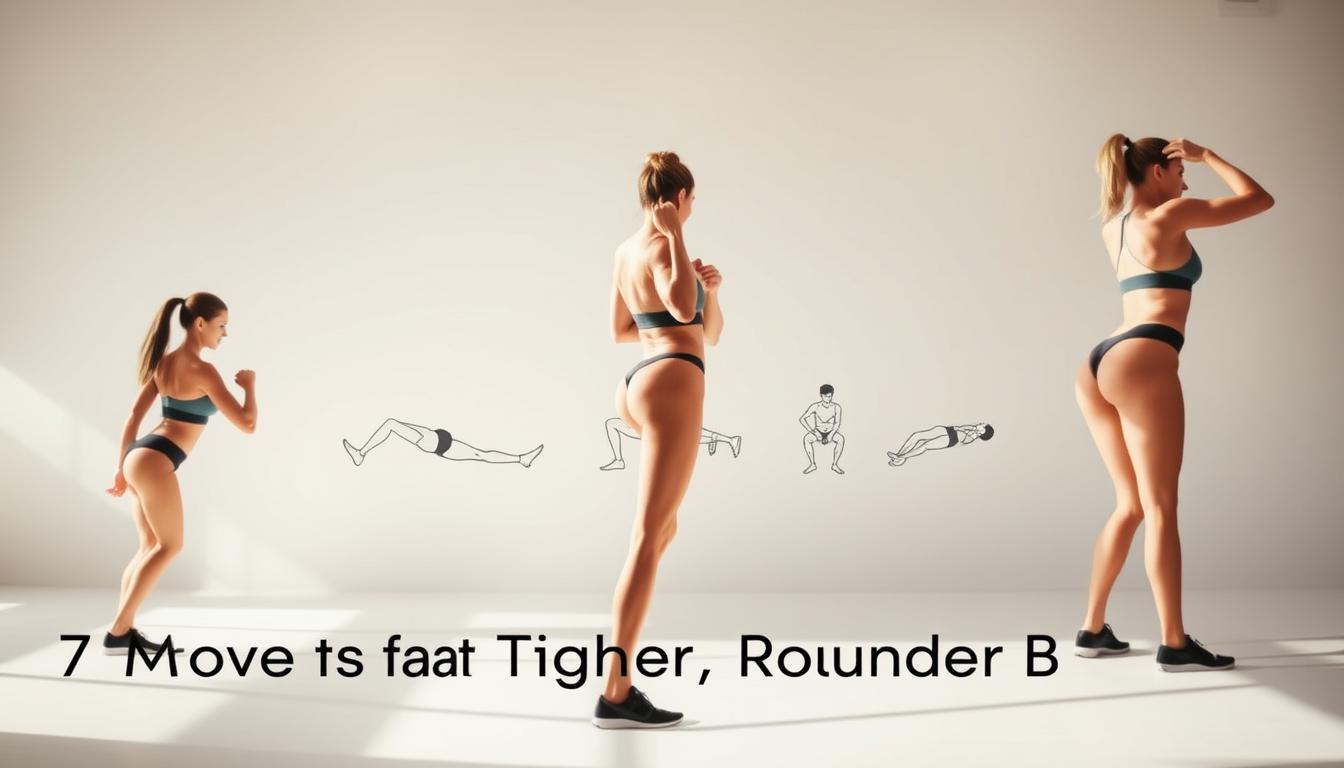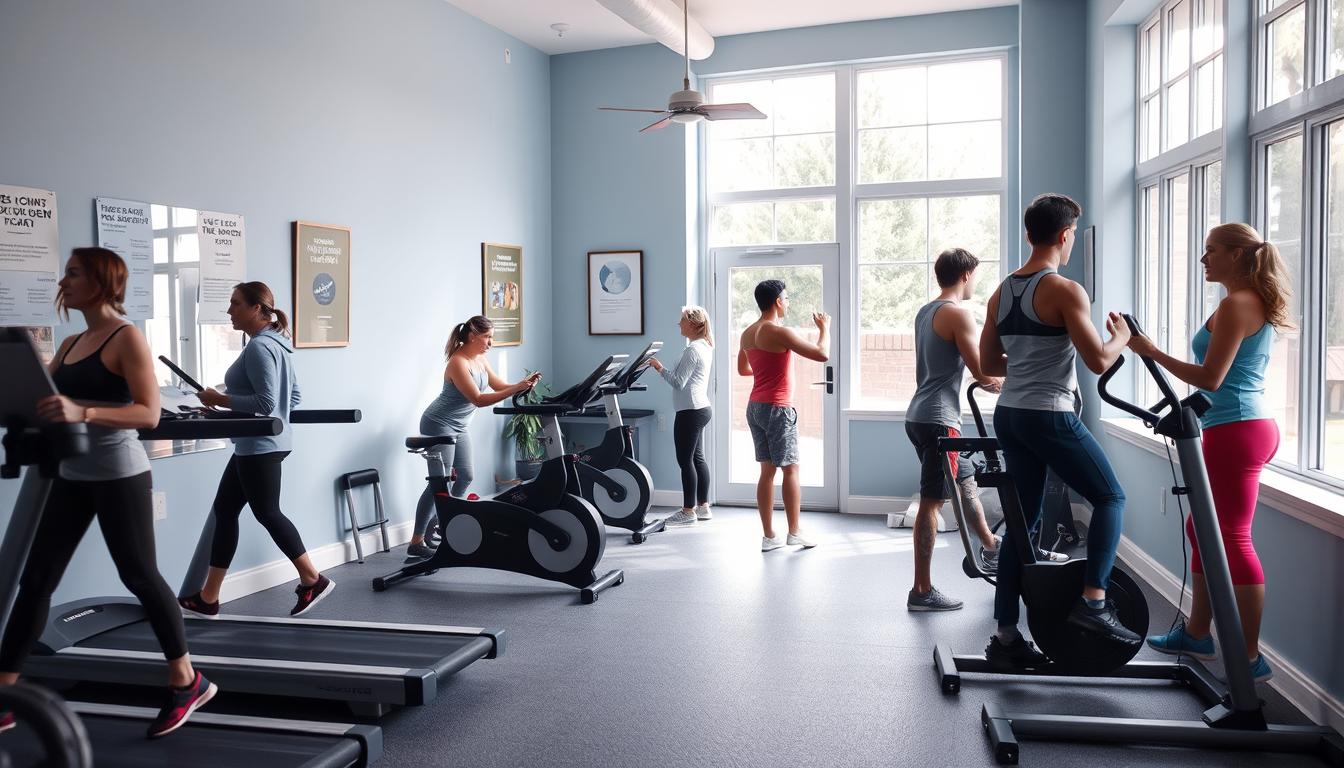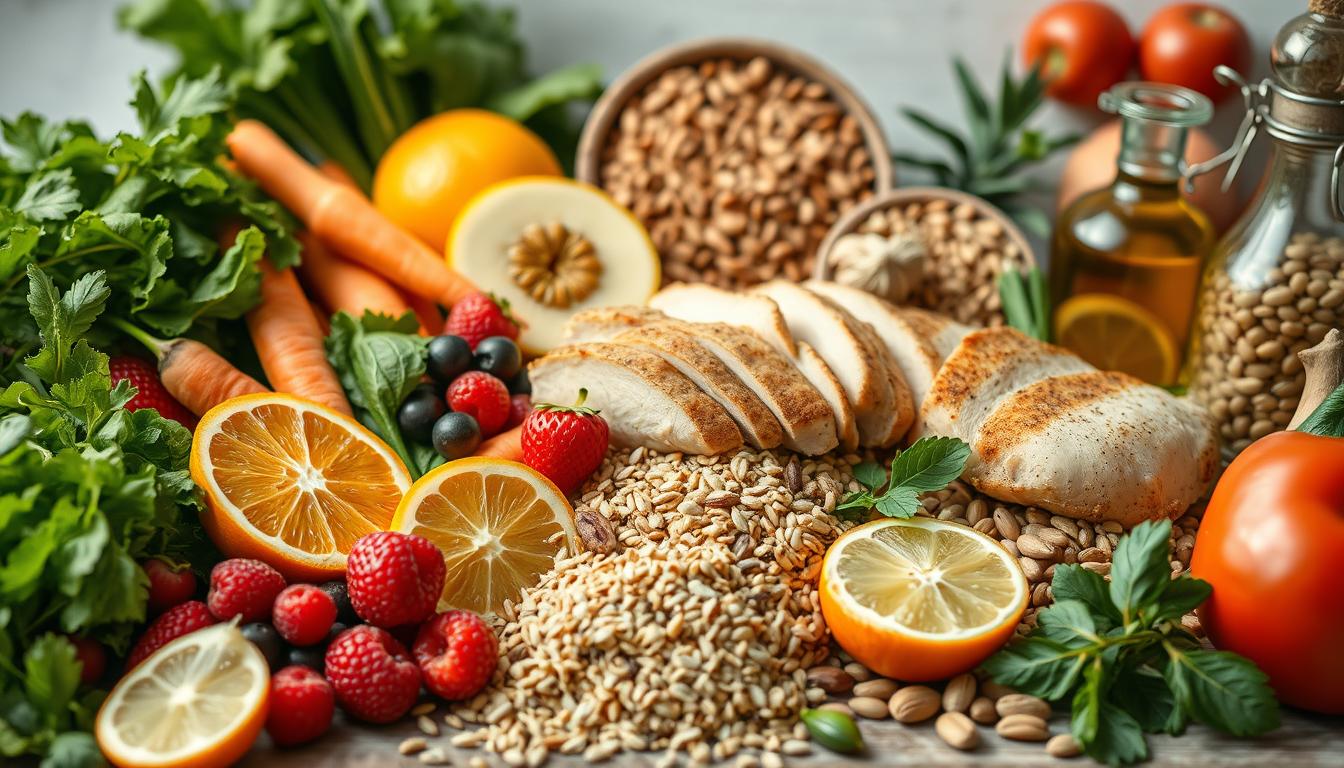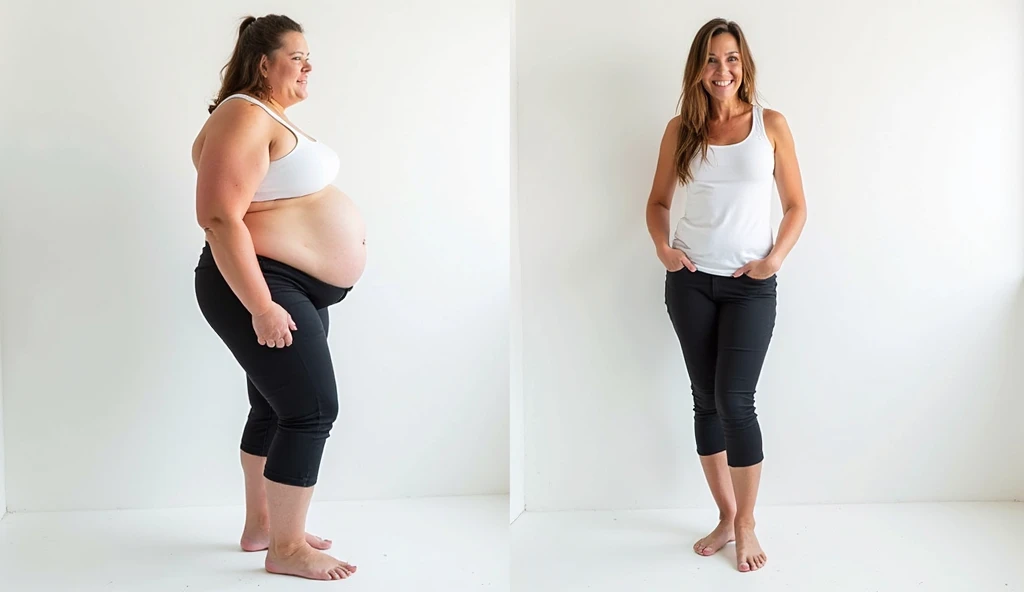When I started my journey toward a healthier lifestyle, I felt overwhelmed. Gyms were expensive, and I didn’t have much time to spare. But then I discovered something life-changing: bodyweight exercises. These simple yet effective moves can be done anywhere—your living room, a park, or even a small corner of your apartment.
What I love most is that you don’t need fancy equipment. Just your body and a bit of determination. Over time, I saw real results by focusing on quality reps and consistent effort. It’s not about perfection; it’s about progress.
This guide is designed for busy people who want to transform their bodies without leaving their house. Whether you’re a beginner or looking to refine your technique, this plan is for you. Let’s take this step together and make health a priority.
Key Takeaways
- Bodyweight exercises require no equipment and can be done anywhere.
- Focus on quality reps to maximize effectiveness.
- Consistency is key to seeing real results.
- This plan is perfect for busy schedules.
- Start small and build momentum over time.
Introduction: My Journey to a Healthier Home Workout Routine
Transforming my body felt like an impossible task until I discovered the power of simple movements. I was juggling a busy schedule and couldn’t find time for the gym. That’s when I decided to take control of my health in a new way—by focusing on bodyweight exercises.
My Motivation and Personal Story
My journey began with a desire to feel better in my own skin. I wanted to lose weight and build strength, but I needed a plan that fit into my life. The idea of training at home seemed unconventional, but it turned out to be the perfect solution.
At first, I struggled with consistency. I doubted whether simple movements could make a difference. But as I stuck with it, I noticed small changes—my leg muscles felt stronger, and my energy levels improved. These victories kept me going.
🌿 Discover the Benefits of Moringa!
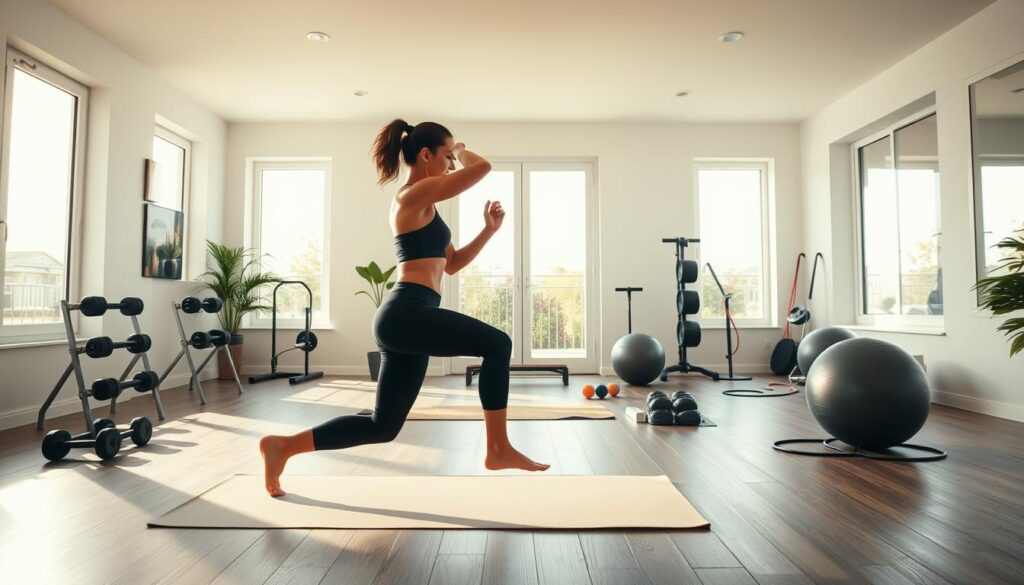
Why I Chose Home Workouts for Weight Loss
I chose bodyweight exercises because they’re adaptable and require no equipment. Whether I was doing squats or lunges, I could modify the movements to match my fitness level. This flexibility made it easier to stay consistent.
Here’s a breakdown of how I structured my sessions:
| Exercise | Focus Area | Reps |
|---|---|---|
| Squats | Legs | 15-20 |
| Push-ups | Upper Body | 10-15 |
| Plank | Core | 30 seconds |
Over time, these exercises helped me achieve my weight loss goals. But more importantly, they improved my confidence and mental outlook. As I progressed, I realized that fitness isn’t about perfection—it’s about showing up and doing your best.
“The journey of a thousand miles begins with a single step.”
If you’re feeling stuck, I encourage you to reflect on your own motivations. Start small, and remember that every step counts. Whether you’re focusing on leg strength or overall fitness, bodyweight training can be a game-changer.
Understanding Fat Loss and Effective Home Training
Understanding how fat loss works changed my approach to fitness. It’s not just about cutting calories—it’s about creating a caloric deficit while maintaining muscle mass. This balance is key to achieving long-term results.
Your metabolism plays a crucial role in this process. By engaging in regular exercise, you can boost your metabolic rate, helping your body burn more calories even at rest. This is where bodyweight exercises like squats and dumbbell movements come into play.
🚀 Start Your Health Journey Today!

The Science Behind Fat Loss at Home
Fat loss occurs when you burn more calories than you consume. This principle, known as a caloric deficit, is the foundation of any successful plan. However, the quality of the calories you consume and the type of exercise you do matter just as much.
Strength training, like squats and push-ups, helps build muscle. Muscle tissue burns more calories than fat, even when you’re not active. Over time, this can significantly increase your daily calorie expenditure.
Monitoring your heart rate during exercise is another critical factor. Staying within your target heart rate zone ensures you’re working at an intensity that maximizes fat burning. For most people, this is around 60-70% of your maximum heart rate.
Here’s a breakdown of how different exercises contribute to fat loss:
| Exercise | Calories Burned (30 mins) | Primary Benefit |
|---|---|---|
| Squats | 200-250 | Builds leg muscles |
| Dumbbell Rows | 150-200 | Strengthens upper body |
| Jump Rope | 300-400 | Boosts cardiovascular health |
Consistency is key. Over several weeks, these small changes add up. Tracking your progress by measuring reps, time, and intensity ensures steady improvements. Even simple movements, when performed consistently, can lead to noticeable results.
Experts recommend combining strength training with a balanced diet for optimal fat loss. Aim for at least 150 minutes of moderate-intensity activity per week. This approach not only helps you lose fat but also improves overall fitness and energy levels.
Remember, fat loss is a gradual process. It may take four to six weeks to see significant changes. But with the right approach, you can achieve your goals without stepping foot in a gym.
Home Workout Routine for Weight Loss
Circuit training became my go-to method for staying active and seeing real progress. It’s a simple yet powerful way to combine strength and cardio into one efficient session. The best part? You don’t need any equipment, and it can be done in just a few minutes.
🌟 Boost Your Wellness with Moringa!
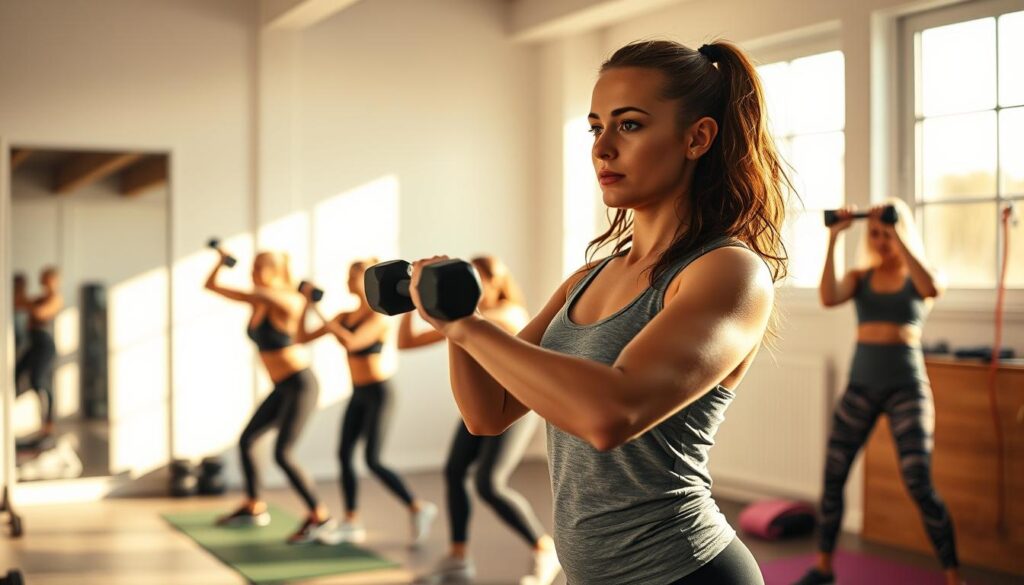
What a Circuit Training Session Entails
A typical session includes a series of exercises performed back-to-back with minimal rest. For example, I might do squats, lunges, push-ups, and planks in one circuit. This approach keeps my heart rate up while targeting multiple muscle groups.
Here’s a sample circuit I follow:
- 20 squats
- 10 lunges per leg
- 15 push-ups
- 30-second plank
Each circuit takes about 10-15 minutes, and I aim to complete 2-3 rounds. Over time, I’ve noticed significant improvements in my strength and endurance.
Tracking Progress and Setting Goals
Tracking my progress has been essential for staying motivated. I keep a journal to record the number of reps, minutes, and how I feel after each session. This helps me see improvements and adjust my routine as needed.
Setting specific goals, like increasing my reps or reducing rest time, keeps me focused. For example, I might aim to add one more lunge per leg each day. Small, achievable goals make the process less overwhelming.
Consistency is key. Even on busy days, I commit to at least 10 minutes of activity. Over time, these small efforts add up to big results.
Essential Warm-Up Techniques for Home Exercises
I used to skip warm-ups until I understood their critical role in performance. Warming up isn’t just a formality—it’s the foundation of a successful session. It prepares your heart, muscles, and mind for the movement ahead, reducing injury risk and enhancing results.
Setting a warm-up goal is essential. Whether it’s raising your heart rate or improving flexibility, a clear objective keeps you focused. Over time, I’ve developed strategies that make warming up both effective and enjoyable.
Dynamic Warm-Up Strategies to Get Moving
Dynamic warm-ups are my go-to for activating muscles and increasing blood flow. These movements mimic the exercises you’ll perform, making them highly effective. For example, arm swings and side reaches prepare your upper body, while hip rotations loosen your lower body.
Here’s a quick routine I follow:
- 30 seconds of marching in place to elevate your heart rate.
- 10 arm swings per side to improve flexibility.
- 10 hip rotations to enhance joint mobility.
These exercises take just a few minutes but make a significant difference in performance. They also help me stay consistent, even on busy days.
Simple Low-Impact Warm-Up Variations
For beginners or those with limited mobility, low-impact warm-ups are a great option. These movements are gentle yet effective, ensuring your body is ready for action. Knee lifts and lateral lunges are two of my favorites.
Here’s how I incorporate them:
- 10 knee lifts to engage your core and improve balance.
- 5 lateral lunges per side to activate your leg muscles.
- 30 seconds of gentle stretching to increase flexibility.
These variations are perfect for easing into exercise. They also help me maintain a steady heart rate without overexertion.
Proper warm-ups have transformed my fitness journey. They’ve not only improved my performance but also reduced my risk of injury. I encourage you to make warming up a non-negotiable part of your routine. Your body will thank you.
Building a Beginner Bodyweight Workout at Home
Starting my fitness journey at home felt intimidating, but bodyweight exercises made it manageable. As a beginner, I needed a plan that was simple, effective, and adaptable to my capabilities. Bodyweight training became my go-to because it required no equipment and could be done anywhere.
Here’s how I built my routine, focusing on key exercises and modifications to ensure progress without injury.
⏳ Exclusive Offer Just for You!
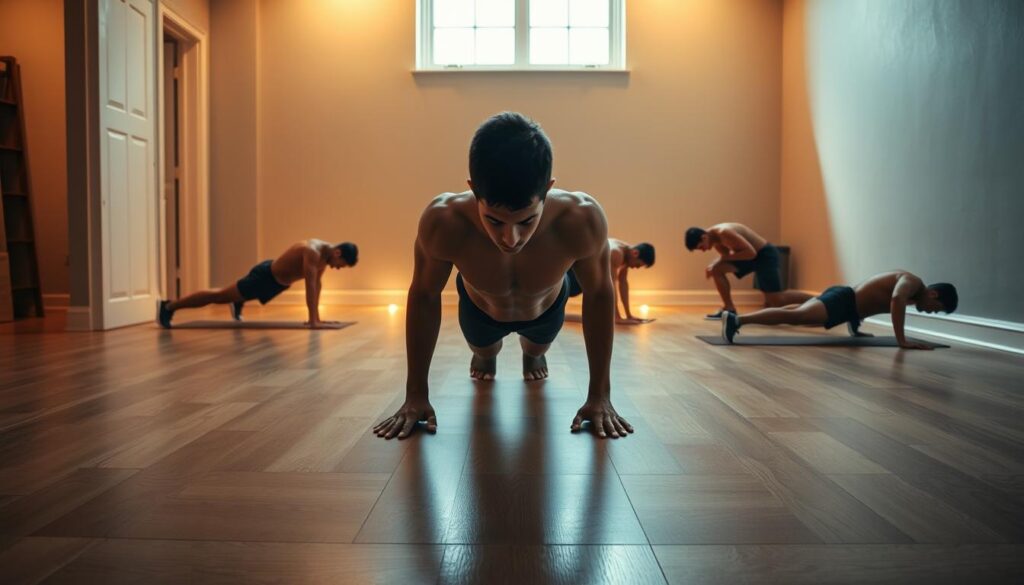
Key Exercises to Start With
When I began, I focused on foundational movements that targeted multiple muscle groups. These exercises formed the backbone of my routine and helped me build strength over time.
Here’s a breakdown of the exercises I started with:
| Exercise | Reps/Sets | Focus Area |
|---|---|---|
| Push-ups | 2-3 sets of 10 | Upper Body |
| Squats | 2-3 sets of 15 | Legs |
| Planks | 3 holds of 30 seconds | Core |
| Lateral Lunges | 2-3 sets of 10 per leg | Lower Body |
These exercises are perfect for beginners because they’re straightforward and effective. Over time, I increased the reps and sets as I grew stronger.
Modifying Movements for Beginners
As a beginner, I quickly learned the importance of modifying exercises to match my fitness level. For example, I started with knee push-ups instead of full push-ups to build upper body strength gradually.
Here are some modifications I used:
- Knee Push-ups: Easier on the arms and shoulders.
- Assisted Squats: Using a chair for support.
- Modified Planks: Keeping knees on the ground for core engagement.
These adjustments helped me avoid injury and build confidence in my abilities.
Pairing my routine with a balanced food plan was also crucial. I focused on nutrient-dense meals to fuel my body and support recovery. For example, I added more protein and vegetables to my diet.
Rest is equally important. I scheduled rest days to allow my muscles to recover and grow stronger. This balance of exercise, food, and rest helped me see steady progress.
If you’re just starting, remember to be patient and consistent. Bodyweight training at home is accessible and effective for everyone. Start small, modify as needed, and celebrate every step forward.
Progressing to Advanced Home Strength Training
As I grew stronger, I realized it was time to push my limits with more advanced techniques. Moving from beginner exercises to challenging variations wasn’t just about increasing reps—it was about refining my approach to strength training. Here’s how I made the transition safely and effectively.
Tweaking Intensity and Reps
One of the first changes I made was adjusting the intensity of my sessions. Instead of sticking to the same number of reps, I gradually increased them. For example, I started with 10 bodyweight squats and worked my way up to 15 or 20. This small tweak made a big difference in building my body strength.
I also reduced my rest time between sets. Initially, I took 90-second breaks, but as my endurance improved, I cut it down to 60 seconds. This kept my heart rate elevated and maximized the effectiveness of each session.
Incorporating HIIT and Challenging Variations
To take my training to the next level, I introduced HIIT (High-Intensity Interval Training). This involved short bursts of intense activity followed by brief rest periods. For instance, I’d do 30 seconds of jump squats, followed by 15 seconds of rest, and repeat for 5 rounds.
I also experimented with advanced variations of familiar exercises. Instead of regular push-ups, I tried decline push-ups or added a clap for extra difficulty. These changes kept my muscles guessing and prevented plateaus.
Here’s a sample advanced routine I followed:
- 20 decline push-ups
- 15 jump lunges per leg
- 30-second side planks per side
- 10 burpees with a push-up
By consistently challenging myself, I saw significant improvements in my strength training results. Remember, progression is about listening to your body and making adjustments that align with your goals.
Exploring Creative Workout Options from Home
Staying motivated can be tough, but adding a creative twist to your sessions makes all the difference. When I felt stuck in a rut, I discovered themed workouts and adaptable routines that transformed my approach to fitness. These ideas not only kept me engaged but also helped me build muscle in fun and unexpected ways.
Fun Themed Workouts (Star Wars, Batman, and More)
Themed workouts are a fantastic way to inject excitement into your routine. For example, I once tried a Star Wars-inspired session where I imagined myself training like a Jedi. Squats became lightsaber lunges, and planks turned into holding a defensive stance. It was a playful yet effective way to stay active.
Another favorite of mine is the Batman workout. This includes exercises like bat-climbs (wall push-ups) and bat-wing stretches. These creative variations not only make the session enjoyable but also challenge your body in new ways. Adding a story or character to your workout can make it feel less like a chore and more like an adventure.
Hotel, Park, and Playground Routines
Limited space doesn’t have to limit your creativity. When I travel, I use my hotel room as a mini gym. Simple exercises like jump squats, chair dips, and suitcase rows keep me active without needing equipment. Even a small area can become a versatile training ground.
Parks and playgrounds are also excellent spaces for dynamic workouts. I’ve used benches for step-ups, monkey bars for pull-ups, and open fields for sprints. These settings not only provide variety but also allow you to enjoy the outdoors while staying fit.
Here’s a quick example of a park routine:
- 10 jump squats
- 15 bench dips
- 20 lateral lunges
- 30-second plank hold
Exploring new ways to stay active keeps your routine fresh and exciting. Whether you’re channeling your inner superhero or turning a park into your gym, creativity is the key to long-term success. Try these ideas and see how they can transform your fitness journey.
Integrating Nutrition and Recovery for Lasting Results
Balancing exercise with proper nutrition and recovery transformed my fitness journey. I quickly realized that what I ate and how I rested were just as important as the effort I put into my sessions. This holistic approach helped me achieve my goals while maintaining energy and preventing burnout.
My Personal Nutrition Tips and Plate Strategies
When I started focusing on nutrition, I aimed for a balanced plate that supported my program. I divided my meals into three key components: lean proteins, complex carbs, and healthy fats. This approach ensured I had the energy to perform while promoting fat loss.
Here’s a simple breakdown of my plate strategy:
| Component | Examples | Benefits |
|---|---|---|
| Lean Proteins | Chicken, fish, tofu | Supports muscle group repair |
| Complex Carbs | Quinoa, sweet potatoes, oats | Provides sustained energy |
| Healthy Fats | Avocado, nuts, olive oil | Boosts nutrient absorption |
I also tracked my water intake, aiming for half my body weight in fluid ounces daily. Staying hydrated improved my performance and recovery.
The Importance of Rest, Stretching, and Recovery
Rest is a non-negotiable part of any effective program. I prioritized 7-9 hours of sleep each night to allow my body to heal and rebuild. On rest days, I focused on active recovery, like light stretching or yoga, to keep my muscle group flexible and reduce soreness.
Here are my top recovery tips:
- Stretch both sides of your body evenly to maintain balance.
- Use foam rolling to relieve tension and improve mobility.
- Incorporate a 3:1 carb-to-protein ratio post-workout for optimal recovery.
By combining these strategies, I noticed significant improvements in my strength and endurance. Remember, recovery isn’t just about resting—it’s about giving your body the tools it needs to thrive.
Conclusion
Embarking on a fitness journey can feel daunting, but with the right plan, it becomes achievable. I’ve shared how interval training and movements like the walking lunge can transform your results. These exercises, combined with proper nutrition and recovery, create a sustainable path to success.
Tracking progress is key. Whether it’s increasing reps or reducing rest time, small adjustments make a big difference. Remember, this journey is personal—adapt the plan to fit your needs and goals.
You’re not alone. Joining a supportive group can provide motivation and accountability. Together, we can celebrate every step forward and stay committed to a healthier lifestyle.
Start today. Every rep, every set, and every recovery minute brings you closer to your goals. Let’s make this journey count.
FAQ
How can I start a beginner bodyweight workout at home?
What are some effective warm-up techniques before a home workout?
How do I track my progress with a home workout routine?
Can I build muscle with bodyweight exercises at home?
What’s the role of nutrition in supporting my home workout goals?
How can I make my home workouts more challenging?
Why is rest important in a home workout plan?
Are themed workouts effective for weight loss?
Can I do my workout routine in a park or hotel?
How do I stay consistent with my home workout plan?
Did you like this article? See also: Best Fat-Burning Foods to Boost Metabolism in 2025


